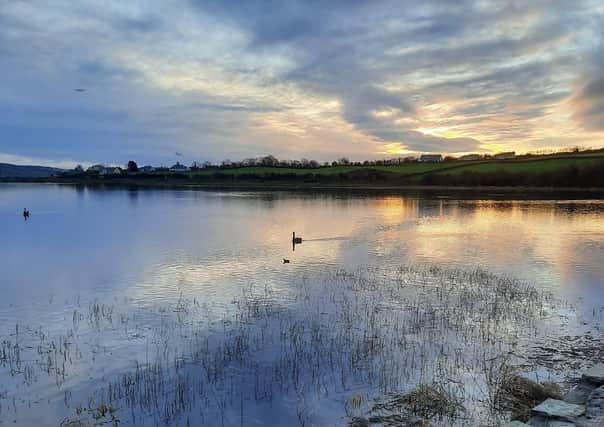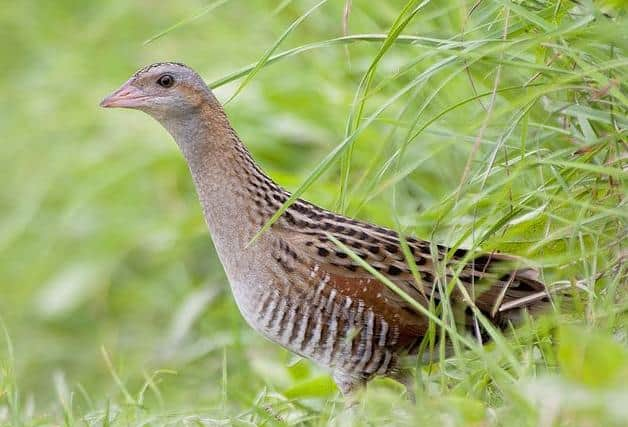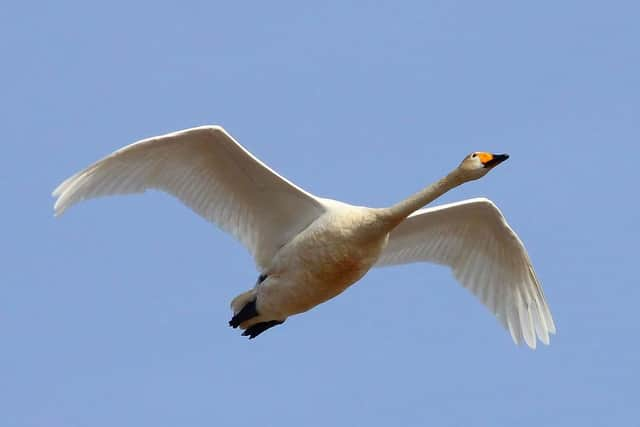Holidays Abroad 2021? - It is for the birds only this year!


As the Covid crisis drags on, foreign summer holidays has now become the latest government obsession.
It was only in the seventies that the idea of a holiday abroad became possible for anybody but the well heeled. However, the government is canny enough to realise that enabling our trips to sunnier destinations is a vote winner.
Advertisement
Hide AdAdvertisement
Hide AdNone of us will die if we miss out on a trip to Benidorm. Unrestricted foreign travel, however, has already proved to be a matter of life and death.


As the days lengthen and the weather hopefully improves in the northern hemisphere, huge movements over vast distances involving millions of birds will happen regardless of our concerns about the current crisis.
These migrations are now affecting the whole of the northern hemisphere but our position near the northern tip of our island makes our location of special importance.
Any trip to Malin Head forces us to contemplate the vastness of the Atlantic. It may have been from here that the first people to reach Iceland set out around the seventh century. These were Irish monks looking for the solitude their faith demanded.


Advertisement
Hide AdAdvertisement
Hide AdThe same journey is made today by wildfowl, millions of ducks,waders,swans and geese. I will concentrate our story on the large swans and geese that make the Swilly and Foyle their winter refuge. They have been driven here for the whole of the winter from the impossible conditions of darkness,extreme cold and lack of food in the arctic.
Every April they will begin to return to their breeding grounds where the continuous arctic summer light and food resources allow them to breed.
One of these birds is the whooper swan. They are best seen grazing in the fields around Burt. They are easily distinguished from the resident mute swans by their yellow beaks.
In April they gather in large flocks and head off over the Atlantic heading for the tundra of Iceland. They form the aerodynamic “V” formation as they navigate 800 miles of ocean. Leaving with them will be greylag geese also heading for Iceland.
Advertisement
Hide AdAdvertisement
Hide AdWhite fronted geese head for Greenland, (1,500 miles). Barnacle geese, made famous in David Attenborough’s film, head for the sea cliffs of western Greenland. Where their goslings make spectacular leaps from their nests and race for the ocean to avoid hungry foxes. Brent geese, which feed along the shore of the Swilly and Foyle, fly to northern Canada and Alaska,(4,000 miles).
For many of us, missing a visit to the Mediterranean shore is a hardship we will have to endure for another year. Ireland at this time of year is like a huge airport, the wildfowl are in the departure lounge, the migrants from the south are approaching the arrivals gate.
Many seabirds, puffins, auks, gannets,guillimots have spent the winter far out at sea but they will return to their nesting sites on the highest sea cliffs and remotest islands.
The arctic tern travels the furthest of our migrants,. They move between the Arctic and Antarctic oceans only pausing to breed in the northern hemisphere including Ireland. Some of these birds travel over 50,000 miles per annum.
Advertisement
Hide AdAdvertisement
Hide AdThere is also a group of smaller song birds. They have spent the winter in the Mediterranean or in deepest Africa. One of the first to arrive in March, is the wheatear. This bird prefers mountains and coastal areas in Ireland.
It spends the winter in Africa as far south as Kenya. Some wheatears carry on through Ireland and head for Greenland,(7,000 miles) I generally see my first swallow around April 17. They spend the winter in southern Africa,(8,500 miles), but return to the place of their birth each year.
Last summer I was lucky to hear a corncrake near Malin Head. Lucky because these once common birds are now very rare. There are only about 150 pairs in Ireland. The numbers of cuckoos have also dropped dramatically. As children we loved to hear the first cuckoo but became irritated by its monotonous call. I only heard it twice last year near Grianan Fort.
Advertisement
Hide AdAdvertisement
Hide AdThe cuckoo spends only a very short time with us, arriving in early May and leaving by the end of June. After it lays its eggs in small songbirds nests, it heads immediately back to its winter quarters in the jungles of central Africa,(7,000) miles. Raised by their foster parents the chicks head there in September entirely on their own.
Cuckoo chicks are not the only migration puzzle. Why these birds undertake these enormous journeys can be explained in fairly simple terms of the availability of food and increased daylight. The swallow moves north to breed during our summer when there are enough flies for them to catch and the daylight of our summers last for 18 hours.
These journeys probably began after the last ice age when the melting ice sheets allowed the birds to venture further and further north. More difficult to explain is the birds’ ability to navigate over featureless oceans or deserts. This may involve using the sun the moon and the stars. They may also make use of the earth’s magnetic field. The latest theory is that birds can detect this field through their eyes.
Advertisement
Hide AdAdvertisement
Hide AdAnyone who has run a marathon knows that strict training is required. You cannot just wake up on the day of the race and start running but this is what birds do. During their stay in Ireland corncrakes do not fly at all, preferring to skulk in long grass. Then, on a given day, they set off to fly to Kenya. Before migrating long distances birds build up their bodies, increasing their weight by 30%.
By shutting down all their unnecessary bodily functions, such as digestive and reproductive organs, they direct all their nutrition to their flight muscles. This enables a whooper swan to fly the 800 miles to Iceland in anything from 10 to 30 hours of nonstop flight.
In his book, ‘Sapiens’ Yuval Noah Harrari describes how the age of discovery and scientific methods, beginning after medieval times, changed our view of the world. It was thought that swallows hid under ice in lakes during winter. Barnacle geese get their name from their supposed metamorphosis into shellfish during the winter (convenient if you wanted to avoid abstinence in Lent).
Advertisement
Hide AdAdvertisement
Hide AdThe legend of the Chidren Of Lir is based on the mysterious seasonal arrivals and departures of the whooper swans. Those Irish monks must have been the first to realise that Aodh, Fiacra, Conn and Deidre did not have to endure 900 years of torture. Which only proves the old adage that facts, scientific or otherwise, should never interfere with a good story. The cold facts of science do not explain the emotions we feel as we see and hear a skein of geese passing overhead in the early morning. It is a visceral contact with one of the wonders of nature. As Yeats said, “We hear it in the deep heart’s core.”
Cliff’s song may not apply to human holiday makers this year but it’s top of the pops for the birds this and every spring.